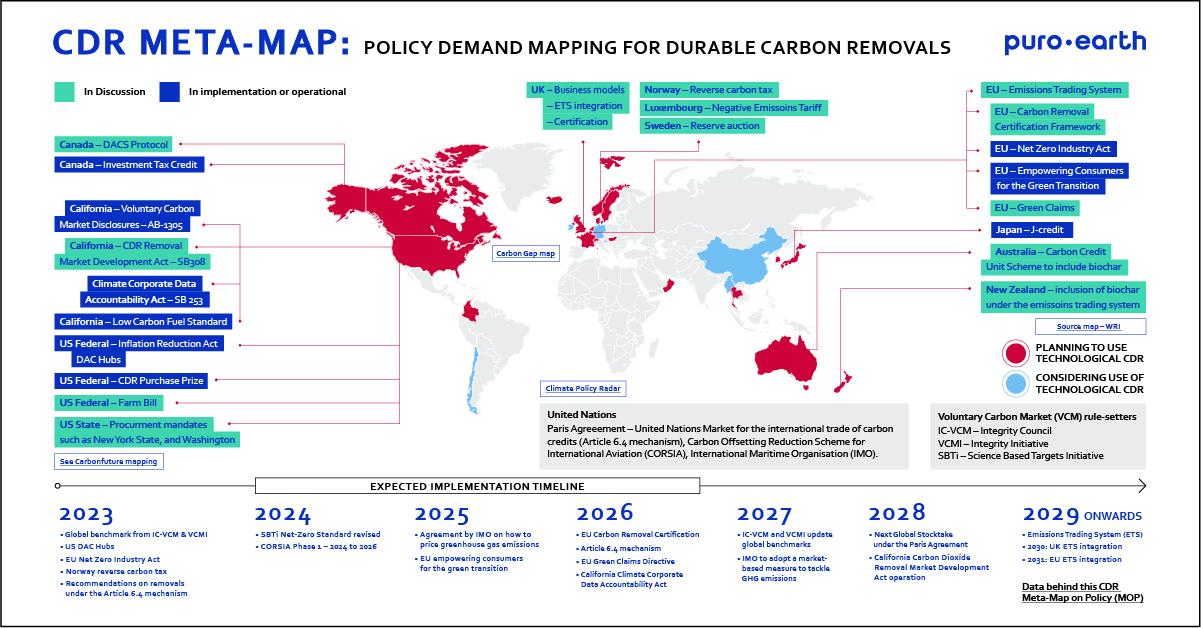During the Carbon Unbound Europe conference in London, October 2023, the Puro Team hosted a campfire session on the policy mechanisms which may enable demand for durable carbon removal. Today, we're excited to share our findings, highlighting the strides made by governments, international organizations, and voluntary rule-setters in shaping certification frameworks, compliance markets, corporate reporting on greenhouse gas emissions, and environmental claims legislation. This information is now available in a downloadable CDR Meta-Map on Policy. It's important to note that this map is a work in progress and open to amendments. We actively seek feedback and aim to spark discussions about the policy mechanisms that will steer the global embrace of durable carbon removal. Thank you to all contributors who made this resource possible.
Download CDR Meta-Map on policy

The data behind the meta-map
We haven’t included targets or political communications nor research and development funds, or innovation funds. We refer to the policy tracker from Carbon Gap, USA mapping from Carbonfuture, we’ve also worked with colleagues at Carbon Unbound Europe, Climate Policy Radar, policy briefs from Carbon Business Council and Claude.ai. The background map is from the World Resources Institute setting out which countries have durable carbon removals in their Long Term Strategies. The definition of durable carbon removal is taken from the IPCC and covers biochar, Bio-Energy Carbon Capture and Storage (BECCS), Direct Air Capture and Storage (DACS) and Enhanced Rock Weathering (ERW). The table is an incomplete list of policies to enable demand for durable carbon removals, we look forward to adding to this list and hearing your feedback.
The role of policy to scale demand for durable carbon removals
- Puro.earth believes that trust should be built through methodologies which set the rules for how to certify carbon removal credits, building on the methods available in the voluntary carbon markets subject to quality criteria set by policy makers.
- We also support legislation which gives clarity on corporate reporting for greenhouse gas emissions, and regulates corporate environmental claims. Companies should have clear plans on how they intend to reach net-zero, and make sure consumers know what they are buying.
- We ask that residual emissions be neutralised with durable carbon removal stored for at least 100 years, and that companies have interim neutralisation milestones before they reach net-zero emissions in the longer te


